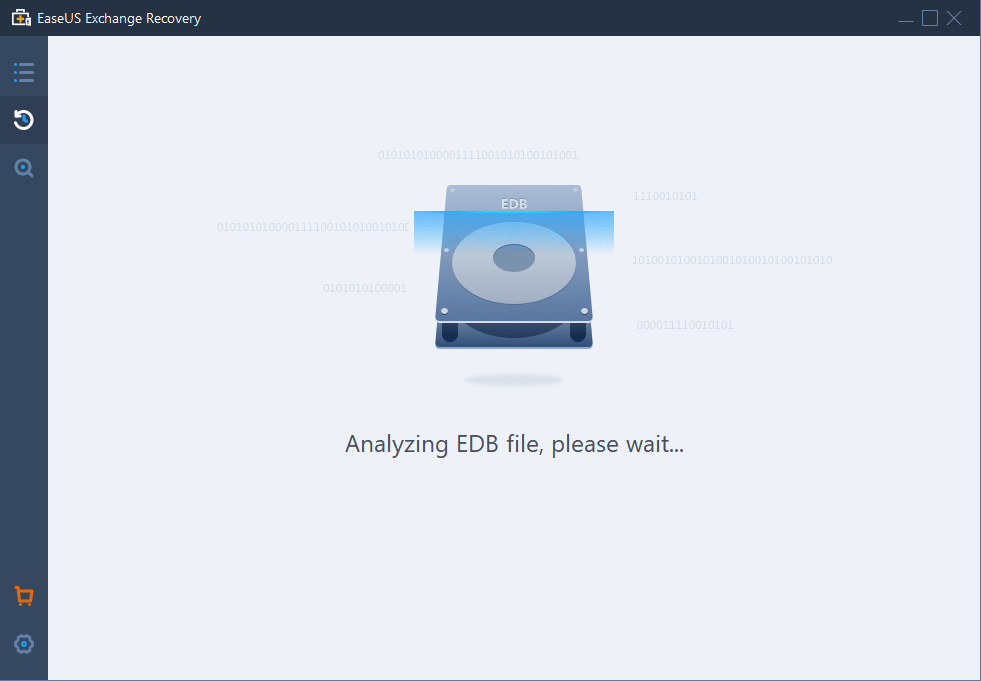Quick navigation of this tutorial for fixing Exchange Dirty Shutdown error:
| Workable Solutions | Step-by-step Troubleshooting |
|---|---|
| Exchange Dirty Shutdown Issue | Dirty Shutdown implies that the database is down and is not in a healthy state. The main reason for the dirty shutdown is the inconsistency in transactions of the log files...Full steps |
| Manual Dirty Shutdown Fixes | You can back up all the database files (.edb and .stm) and logs files, free up the disk space, check the database consistency and status, defragment the database, check database integrity and database consistency...Full steps |
| Auto Exchange Recovery Tool | If the manual fixes are too complex for you to solve the Exchange dirty shutdown problem, use an easier and more effective approach by using EaseUS Exchange Recovery, which can quickly scan and repair the entire EDB...Full steps |
What Is Dirty Shutdown of Exchange Server
The term Dirty Shutdown implies that the database is down and is not in a healthy state. The main reason for the dirty shutdown is the inconsistency in transactions of the transactional log files. If the EDB file is not properly detached from the transaction log files, the database goes in the dirty shutdown state. Then, the Exchange server is unable to access and read the transaction logs and lead to a transactional discrepancy.
When you encounter Exchange Dirty Shutdown, you can manually fix it by using Eseutil utility. If you fail after this method, you can still use EaseUS Exchange Recovery tool to help you automatically recover and repair mailboxes (EDB) files and contents in Exchange 2019, 2016, 2013, and 2010.
Manually Fix Exchange 2016/2013/2010 Dirty Shutdown Error Using Eseutil Utility
Follow the steps shown below to fix the issue and recover Exchange Server database after the Dirty Shutdown. If you are new to Exchange and know little about the Eseutil commands, you'd better use the automated way to resolve Exchange Dirty Shutdown error without more data loss.
1. Back up all the database files (.edb and .stm) and logs files to somewhere else.
2. Free up the disk space: To recover Exchange database from a Dirty Shutdown state, you need to ensure that there is 110% of empty disk space.
3. Check the database consistency. Run the following command to check the consistency of the database.
eseutil /mh "path of the priv.edb" (eg: eseutil /mh "c:\db\mailbox database.edb")
4. Check Exchange database status. The status of the database should be "Dirty Shutdown".
If the Exchange shows Dirty Shutdown, you can first try the "Soft Repair" to fix the issue. And if that does not work, then try using "Hard Repair". Let's look into each method:
Run Soft Repair
eseutil /r – run it from database log folder and specify log chk file (c:\dblog>eseutil /r E00).
or specify the following commands:
eseutil /r "prefix"/l > /d
Eseutil /r E00 /l c:\dblog /d c:\db
Check The DB Consistency: Check the database consistency again and if it shows a clear shutdown, directly go to Step 6. But, if the soft repair didn't work, then run the hard repair.
Hard Repair
If Soft repair doesn't work, try a hard repair.
Eseutil /p , eg: Eseutil /p "c:\program files\exchangesrvr\maildbdata\priv1.edb"
5. Defragment the database. Now defragment the DB using the eseutil /d command applied to the mailbox database file.
Eseutil /p , eg: Eseutil /p "c:\program files\exchangesrvr\maildbdata\priv1.edb"
After running this command, remove the log files in the MDBDATA folder before commencing with the database mounting.
6. Check database integrity. This command takes up to 10 minutes per Gig of Data. If you don't have time (runs at about 2 to 10 minutes per Gig of data) you can skip it after soft recovery. But, if you have attempted hard recovery, then you must run it.
isinteg -s "name of the server" -test alltests
If this integer check fails, then run the following command.
isinteg -s "servername" –fix –test - alltests
Run this command repeatedly till all the errors reach the level 0, or the status starts showing no changes.
7. Check the database consistency again. Now check the database consistency with eseutil /mh command, and it must show "clear shutdown" as the status.
Automatically Recover Exchange Server Database with a Exchange Recovery Tool
With the afore steps, you can fix the Exchange Dirty Shutdown issue and recover the database file. However, if you fail to do it or the methods are too complicated for you, here comes an easier and more effective approach by using EaseUS Exchange Recovery application. This software can quickly repair corrupted mailboxes in Exchange 2016/2013/2010.
It can quickly scan the entire database/EDB file and extracts all recoverable items from different user mailboxes, such as emails, appointments, contacts, calendar entries, notes, tasks, and journal records. With this capable Exchange server recovery tool, you can recover deleted mailbox in Exchange without effort.
Step 1. Select the EDB files.
Search and select the lost Exchange database files. Once you have selected the EDB files, click "Analyze".

Step 2. Analyze the files.
The software will analyze and find lost Exchange data.

Step 3. Recover wanted data.
Select the emails and other data you need and preview mailbox contents.
Then export the data to a specific location by clicking "Export MSG" or recover the data to the server by clicking "Recover".

Was This Page Helpful?
Related Articles
-
Fixed: Exchange Mailbox Database Won't Mount [NEW]
![author icon]() Tracy King/2025-07-21
Tracy King/2025-07-21 -
Exchange EDB File Viewer | How to Open EDB File Without Exchange Server
![author icon]() Cedric/2025-07-21
Cedric/2025-07-21 -
Recover Deleted Items in Exchange Server 2016/2013/2010
![author icon]() Tracy King/2025-07-21
Tracy King/2025-07-21 -
Automated Way to Repair Corrupted Mailbox in Exchange 2016
![author icon]() Cedric/2025-07-21
Cedric/2025-07-21
EaseUS Exchange Recovery
- Recover & Repair corrupted EDB files and contents
- Recover from unexpected Exchange Server crash
- Recover Dismounted/Offline EDB Mailbox